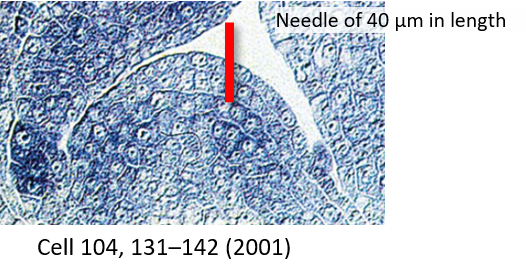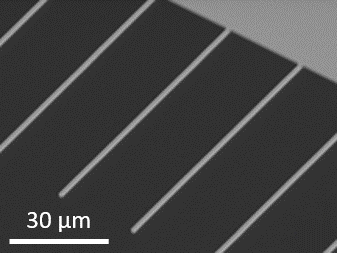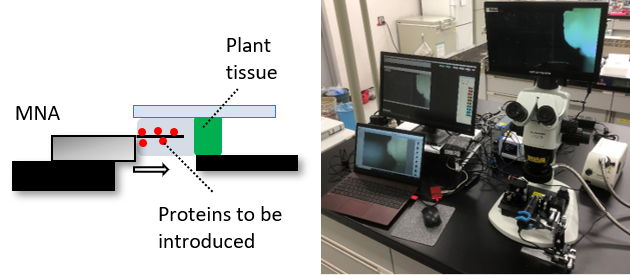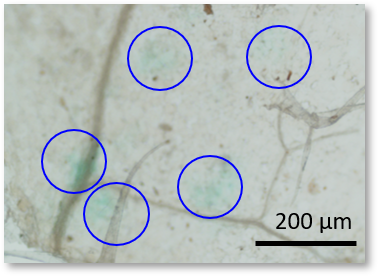Genome editing of plants using microneedle arrays
By further applying the needle array technology, we have developed an in planta genome editing method by introducing genome editing proteins into the L2 layer of shoot apical meristem (SAM). We have newly developed a microneedle array (MNA) whose thickness has been raised to the micrometer order to break through the hard cell walls of plant tissue.

It must be at least 40 µm long to reach the L2 layer of the SAM.

The newly developed flat comb-shaped microneedle array is 100% insertable into Arabidopsis leaf tissue and soybean SAM without buckling and breakage.

We have developed a new instrument and delivery method that works on a stereomicroscope basis.

We have shown that genome editing is possible by direct introduction of genome editing proteins such as Cas9. It is expected that genome editing will be possible even in plant species and tissues where gene expression systems have not been established.
This work was supported by New Energy and Industrial Technology Development Organization (NEDO).